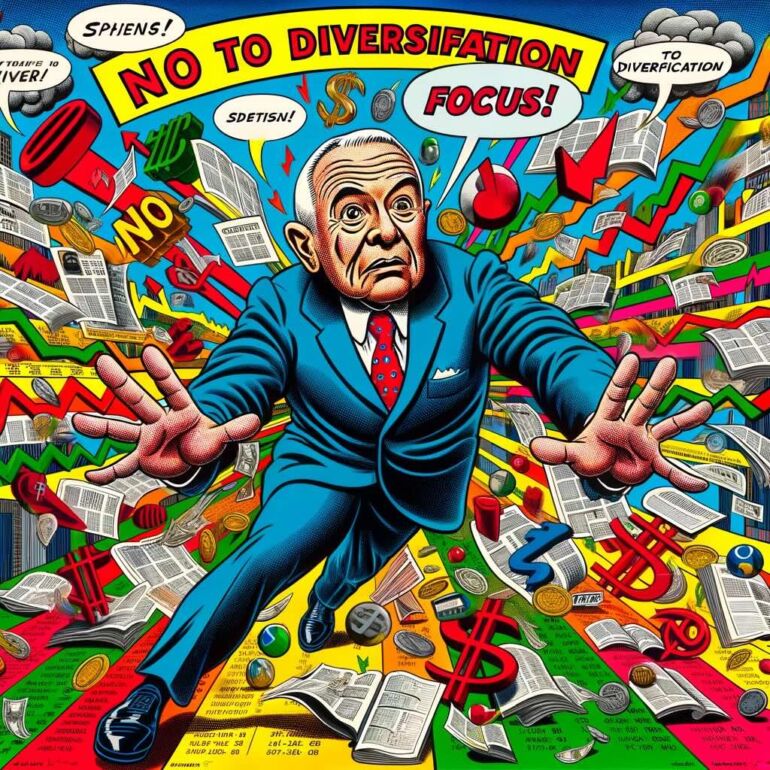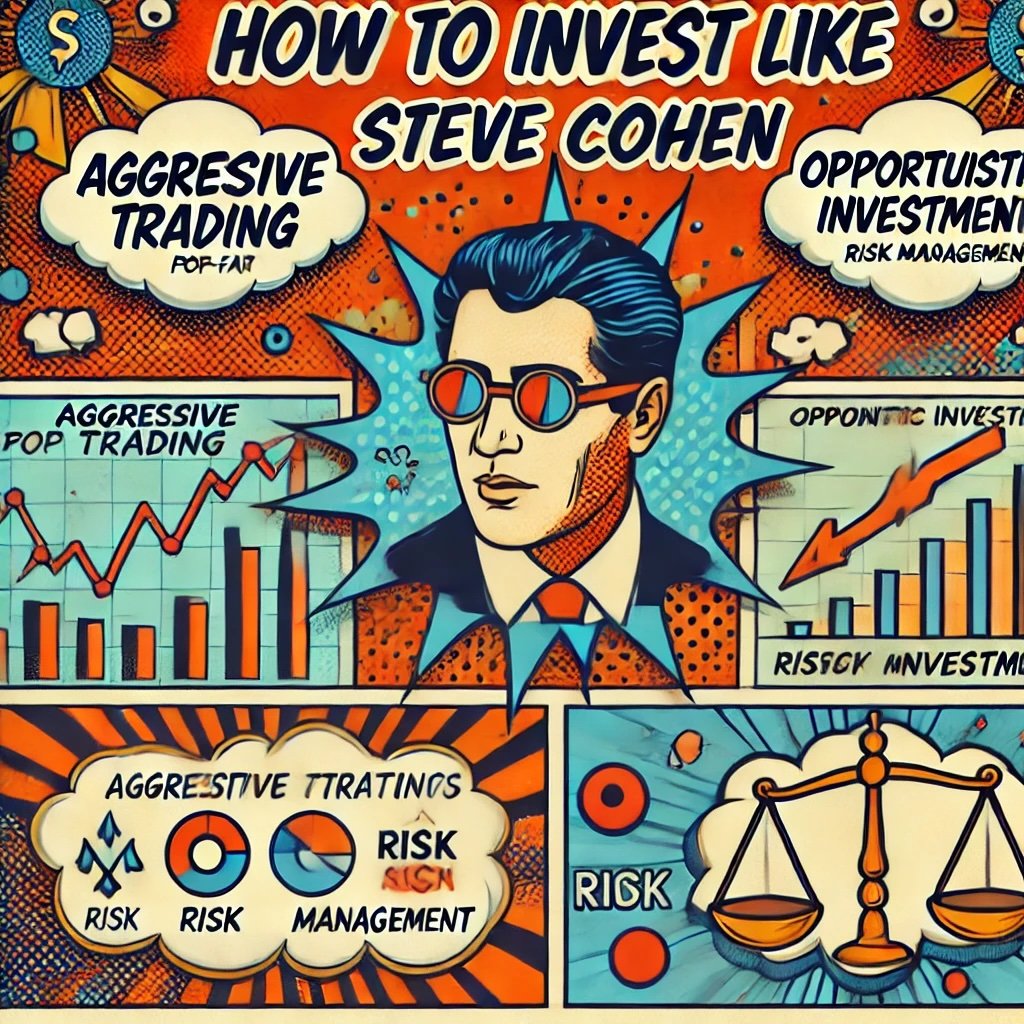If investing was an orchestra, Charlie Munger would surely be its celebrated conductor. A legendary investor, a revered thinker, and a philosophical maestro, Munger’s influence resonates far beyond the world of finance. As the vice-chairman of Berkshire Hathaway, the investment conglomerate he stewards alongside Warren Buffett, Munger has composed a symphony of financial successes that ring with the clarity of his wisdom and acumen.

The Maestro of Investing: An Introduction to Charlie Munger
But who is Charlie Munger, you might ask? Born in 1924, this nonagenarian’s life is a grand sonnet that spans law, real estate, and the pinnacle of his achievements, investing. Munger’s penchant for clear, rational thinking and his disdain for following the crowd have made him one of the most distinctive voices in the cacophony of Wall Street.
Symphony of Diversification: Contextualizing its Importance in Investing
In investing, diversification often plays the role of the background melody, subtle yet crucial. This strategy, which involves spreading investments across various financial instruments, sectors, or other categories to reduce risk, has been a cornerstone of traditional investing theory. It is often likened to not putting all your eggs in one basket—a cautionary refrain echoed in the halls of finance and investment.
But what happens when a master conductor like Charlie Munger decides to alter the rhythm? How does the melody change when the conventional wisdom of diversification is questioned, and a different approach is embraced? In this insightful journey, we’ll explore Munger’s unique perspective on diversification (or lack thereof), delve into his philosophy of concentration, and dissect some of his investment decisions. We will also explore how his approach might resonate in our personal investment strategies. So, tune your instruments, adjust your tempo, and prepare for a masterclass in investing, the Munger way.

Understanding Diversification in Investing
Imagine investing as a complex dance, a ballet of risk and reward, performed on the grand stage of the financial market. One misstep, one offbeat move could result in a catastrophic tumble. Diversification, then, is the choreography that brings harmony and balance to this dance.

The Dance of Diversification: An Explanation of the Concept
In the world of investing, diversification is the strategy of spreading your investments across a variety of assets—stocks, bonds, commodities, real estate, and more— to lower your risk. It’s like assembling a unique dance troupe, each performer with a different skill set, so if one stumbles, the others can still carry on the performance smoothly.
This is because different assets often perform differently under varying economic conditions. Some might excel during economic booms, while others might provide stability during downturns. Thus, by diversifying, you’re hedging your bets, ensuring you’re not overly dependent on any single investment or asset class.
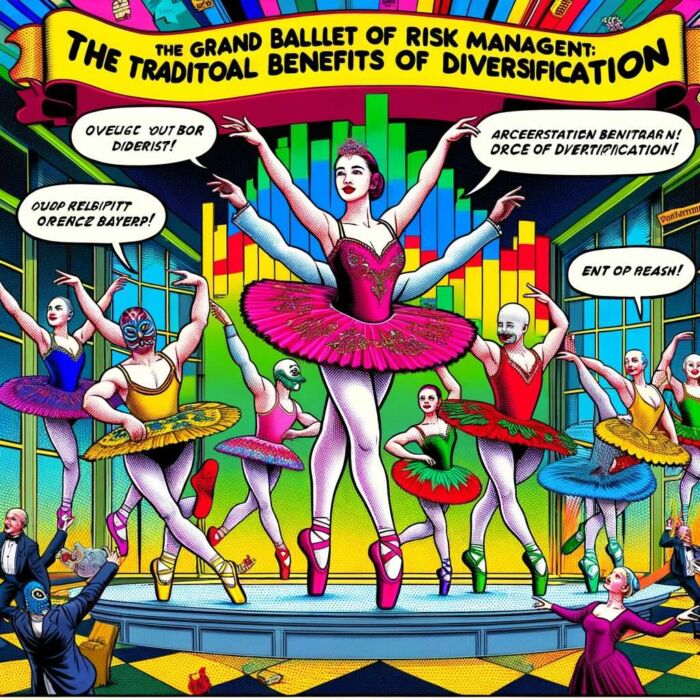
The Grand Ballet of Risk Management: Traditional Benefits of Diversification
In the grand ballet of investing, diversification serves as the principal dancer, guiding the performance with grace and poise. Its primary advantage lies in risk management. Just as a seasoned ballet dancer spins and twirls with apparent ease, a well-diversified portfolio can gracefully navigate the tumultuous tides of the market.
When your investments are spread across a variety of assets, a downturn in one area can be offset by stability or gains in another, thereby potentially reducing losses. It’s a bit like having a safety net beneath your high-flying financial trapeze act, there to catch you if one of your investments takes a dive.
Moreover, diversification provides exposure to different sectors and asset classes, increasing the chances of holding winning investments that can drive portfolio growth. It ensures that you don’t miss out on the stellar performance of an industry or asset that you may not have considered if your investments were concentrated in a few areas.
However, as we’ll soon learn, Charlie Munger dances to a different tune, questioning the conventional rhythm of diversification, and striking a unique chord in the symphony of investing. Buckle up, because the maestro is about to take the stage.
source: IDP on YouTube
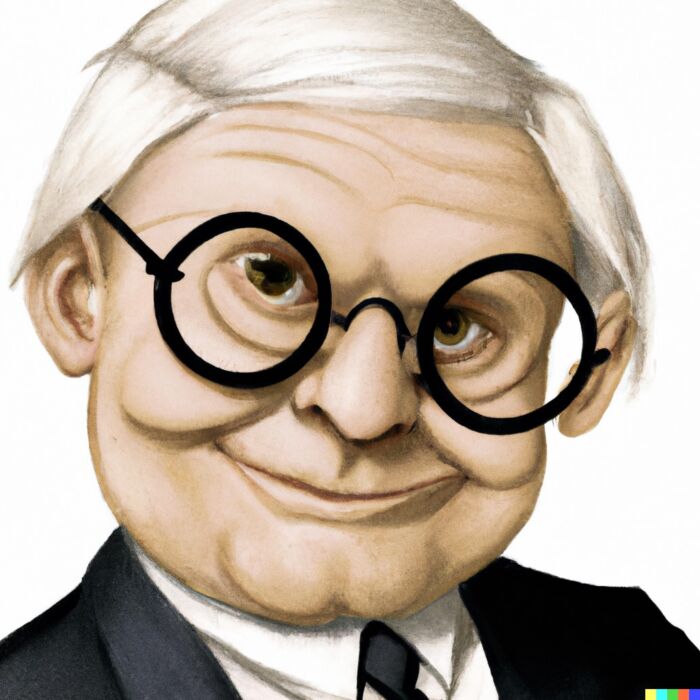
Charlie Munger’s View on Diversification
An Unconventional Dance: Munger’s Viewpoint on Diversification
In the grand ballet of investing, Charlie Munger refuses to follow the choreography of diversification. Instead, he performs his own pirouette, spinning away from the common doctrine of spreading risk across many baskets. Munger, true to his contrarian nature, often champions a different tune: the art of concentration.
He questions the dogma of diversification, arguing that it often leads to mediocrity and inhibits superior performance. To Munger, investing is not about owning a large number of stocks; it’s about understanding a few great businesses deeply and investing in them confidently. “The idea of excessive diversification,” he says, “is madness.”

The Crescendo of ‘Deworsification’: Discussing Munger’s Concept
Munger’s view introduces a different rhythm to our investment symphony, one he’s termed ‘deworsification. This playfully coined term warns against over-diversification, which he argues leads to poorer investment outcomes. Deworsification occurs when an investor, in the pursuit of safety through diversification, dilutes the quality of their portfolio with subpar investments.
To Munger, the pursuit of diversification for its own sake is akin to a discordant note in an otherwise harmonious symphony. It interrupts the melody of rationality that he so fervently conducts in his investment decisions.
A Solo Performance: Munger’s Preference for Concentration over Diversification
Instead of a chorus of different investments, Munger prefers a solo performance, an approach that champions concentration. He believes that a well-reasoned, thoroughly-researched, and deeply-understood portfolio of a few companies can outperform a diversified portfolio. This concentration allows an investor to focus their attention and resources on understanding a few select businesses, thereby reducing the chances of making uninformed decisions.
It’s akin to a virtuoso violinist deciding to master a handful of concertos to perform flawlessly, rather than trying to perform an entire repertoire adequately. In Munger’s melody, diversification’s safety in numbers gives way to the bold and confident notes of concentrated investing. This unique rhythm has underscored his successful investment journey, striking a high note in the grand opera of finance.
source: Development Dose on YouTube

Case Studies Highlighting Munger’s Approach
Spotlight on Success: Analysis of Munger’s Investment Decisions
As we explore Munger’s unique investing dance, let’s take a front-row seat and enjoy some of his most renowned performances.
One of the most illustrative examples of Munger’s philosophy is the investment in See’s Candies. In 1972, Berkshire Hathaway, the company Munger guides alongside Warren Buffett, purchased See’s for $25 million. Instead of spreading this amount across several investments, they concentrated on a single business they understood deeply and believed in passionately. See’s Candies had a durable competitive advantage, a strong brand, and a product people loved.
Under Munger’s and Buffett’s stewardship, See’s Candies has since earned Berkshire more than $2 billion. This star performance showcases Munger’s philosophy in action: a deep understanding of the business, a significant investment, and a long-term holding period, dismissing the need for diversification.

The Grand Ensemble: Impact of Munger’s Approach on Berkshire Hathaway’s Portfolio
Munger’s soloist approach to investing plays a pivotal role in shaping the Berkshire Hathaway ensemble. If we peek behind the curtain at Berkshire Hathaway’s portfolio, we find a concentration in a handful of high-conviction investments.
Companies such as Apple, Bank of America, Coca-Cola, and American Express dominated the portfolio, with Apple alone comprising over 40% of their portfolio. This is a testament to Munger’s approach—rather than spreading their bets widely, they invest a significant amount in a few businesses they understand deeply and believe in thoroughly.
Their performances are a symphony that echoes Munger’s investing philosophy. They demonstrate that when a great conductor (read, investor) identifies a virtuoso performer (read, solid business), the resulting music can be extraordinarily harmonious, financially rewarding, and satisfying to the audience, the shareholders. And they’ve done all this while dancing to a different tune than the diversification waltz.
This approach, however, is not without its critics. So, let’s turn the spotlight onto the stage of debate, shall we?
source: The Financial Review on YouTube

Debating the Merits and Risks of Munger’s Approach
When Munger conducts his orchestra, each instrument – each investment – is selected with utmost care and consideration. This concentration brings a number of benefits to the harmonious concert of investing success.
The Sweet Symphony of Success: Advantages of Munger’s Concentrated Investing Strategy
Firstly, investing in a few select companies allows for a deeper understanding of each business. Munger advocates for buying businesses, not just stocks. This means understanding a company’s competitive advantage, financial health, leadership, and industry position. With a concentrated portfolio, an investor has the time and energy to thoroughly understand each investment.
Secondly, a concentrated portfolio can result in substantial returns if the select investments perform well. When a well-researched and deeply understood business thrives, the returns can far outweigh those of a diversified portfolio. This is akin to a solo performer stealing the show with a stellar performance.
Lastly, concentration encourages discipline and a long-term mindset. It prompts investors to make more thoughtful decisions, rather than spreading their bets impulsively. Munger’s strategy is the investing equivalent of a maestro meticulously crafting a symphony that stands the test of time.
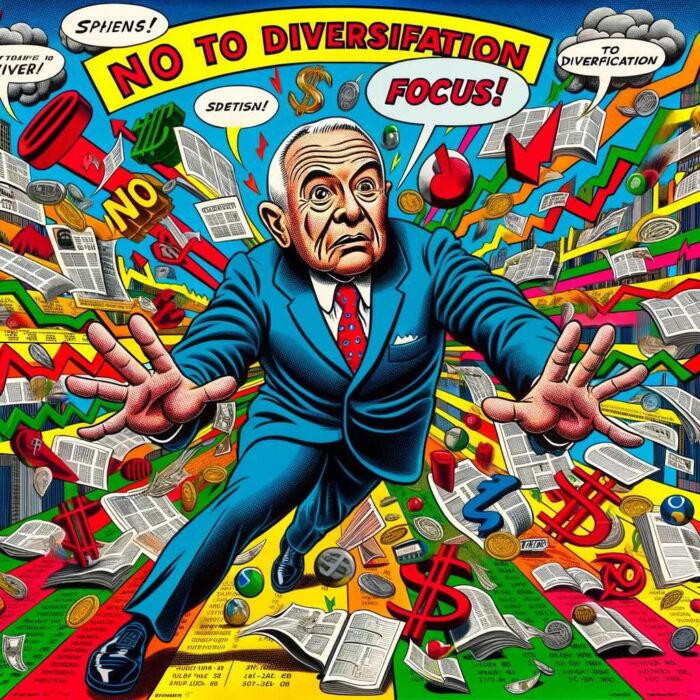
An Orchestra Out of Tune? Potential Risks and Criticisms Associated with a Lack of Diversification
Despite the merits of Munger’s approach, critics argue it could be akin to conducting an orchestra with just a few instruments. The music might be unique, but it lacks the richness of a full ensemble.
The primary criticism of a concentrated portfolio is the heightened risk. If an investment performs poorly, it can significantly impact the portfolio’s value. It’s like having a soloist hit a wrong note during a performance – the error reverberates throughout the concert hall.
Furthermore, the approach requires a high level of expertise and understanding. Not every investor has the skills, time, or inclination to analyze businesses deeply. For these investors, diversification offers a more balanced approach, akin to an orchestra that creates a beautiful symphony with the combined efforts of many instruments.
Finally, a concentrated portfolio can miss out on opportunities in sectors or companies outside the investor’s focus areas. It’s like a conductor focusing so much on the violin that they miss the rich tones of the cello or the grandeur of the trumpet.
In the grand theatre of investing, the debate between concentration and diversification continues to take center stage. But, as we’ll see next, there’s no one-size-fits-all performance. The real art lies in crafting a strategy that suits your investment style, risk tolerance, and financial goals.

Applying Munger’s Philosophy in Personal Investing
So, how can individual investors dance to Munger’s tune? It begins by embracing the key tenets of his philosophy—deep understanding, concentration, and long-term thinking.

Adopting Aspects of Munger’s Approach in Personal Investing
An investor can start by narrowing their focus to a few sectors or industries they understand well or are passionate about. This could be based on their professional background, interests, or even hobbies. Once they’ve identified these areas, they can start researching and identifying potential investments within them.
Remember, investing, according to Munger, is not a game of buying and selling stocks. It’s about becoming part-owner of a business. As such, a deep understanding of the business, its industry, its competitive positioning, and its financial health is critical. An investor should be as comfortable investing in a company as they would be buying the entire business.
Adopting a long-term mindset is also crucial. Once an investment is made, patience is key. Munger’s philosophy isn’t about quick wins or short-term trades. It’s about holding onto great businesses and reaping the rewards over time.

Balancing the Need for Diversification with Munger’s Principles
While Munger’s philosophy is compelling, it’s important to remember that each investor’s performance is unique. What works for Munger may not work for everyone. Each investor has their own risk tolerance, investment objectives, and financial situation. As such, while we can learn from Munger’s philosophy, we must also choreograph our own unique investing dance.
This might mean striking a balance between diversification and concentration. An investor could, for example, have a core portfolio of diversified investments for stability and a smaller satellite portfolio where they apply Munger’s principles of concentration and deep understanding.
In the grand theatre of investing, the key is not to mimic the dance of others blindly, but to understand the music, learn the steps, and then dance in a way that suits you. As you take inspiration from Munger’s unconventional approach, remember his underlying mantra: “It’s not about being the richest person in the cemetery. It’s about going to bed at night knowing you’ve done your homework and made the best decisions possible for your investment dance.” So, find your rhythm, understand your steps, and let the music of your unique investment philosophy guide you.
source: Dr Sabrina Kay on YouTube

Conclusion: Munger’s unique stance on diversification in investing
As the curtain falls on our exploration of Charlie Munger’s dance with diversification, let’s revisit the unique choreography he’s devised. Munger, as an orchestral conductor of the investment world, has an unorthodox approach. He handpicks his soloists, focusing on a few companies he understands deeply, and guides them to perform a harmonious symphony over the long term.
This concert of concentration dismisses the broad orchestra of diversification, favouring instead a focused few capable of delivering a powerful performance. His principles, illustrated by Berkshire Hathaway’s success with companies like See’s Candies and Apple, demonstrate the potential of a concentrated portfolio.
Yet, in the grand ballet of investing, not all critics agree with his choreography. The potential risks associated with a lack of diversification can’t be ignored, particularly for those who aren’t master conductors themselves.

Final Thoughts on the Applicability of Munger’s Philosophy in the Modern Investing Landscape
Yet, in the dynamic theater of the modern investing landscape, Munger’s philosophy can still command the stage. His principles—deep understanding, concentration, and long-term thinking—resonate powerfully in an era often characterized by short-term speculation and algorithmic trading.
Adapting his philosophy doesn’t necessarily mean ignoring diversification completely. Instead, it might involve striking a balance, creating a unique dance that combines elements of both concentration and diversification based on your personal circumstances, risk tolerance, and investment goals.
The magic lies not in rigidly following Munger’s steps, but in understanding the music—his philosophy—and then dancing in a way that suits you. So, as the spotlight dims and you prepare to take your place on the grand stage of investing, remember this: it’s not about mimicking the greats; it’s about learning from them and choreographing your own unforgettable performance.
As Munger himself might say, it’s time to stop simply reading the sheet music and start conducting your own investment symphony. The maestro’s baton is in your hands. The stage is set. The audience is waiting. Now, let your unique investment dance begin!
Important Information
Comprehensive Investment Disclaimer:
All content provided on this website (including but not limited to portfolio ideas, fund analyses, investment strategies, commentary on market conditions, and discussions regarding leverage) is strictly for educational, informational, and illustrative purposes only. The information does not constitute financial, investment, tax, accounting, or legal advice. Opinions, strategies, and ideas presented herein represent personal perspectives, are based on independent research and publicly available information, and do not necessarily reflect the views or official positions of any third-party organizations, institutions, or affiliates.
Investing in financial markets inherently carries substantial risks, including but not limited to market volatility, economic uncertainties, geopolitical developments, and liquidity risks. You must be fully aware that there is always the potential for partial or total loss of your principal investment. Additionally, the use of leverage or leveraged financial products significantly increases risk exposure by amplifying both potential gains and potential losses, and thus is not appropriate or advisable for all investors. Using leverage may result in losing more than your initial invested capital, incurring margin calls, experiencing substantial interest costs, or suffering severe financial distress.
Past performance indicators, including historical data, backtesting results, and hypothetical scenarios, should never be viewed as guarantees or reliable predictions of future performance. Any examples provided are purely hypothetical and intended only for illustration purposes. Performance benchmarks, such as market indexes mentioned on this site, are theoretical and are not directly investable. While diligent efforts are made to provide accurate and current information, “Picture Perfect Portfolios” does not warrant, represent, or guarantee the accuracy, completeness, or timeliness of any information provided. Errors, inaccuracies, or outdated information may exist.
Users of this website are strongly encouraged to independently verify all information, conduct comprehensive research and due diligence, and engage with qualified financial, investment, tax, or legal professionals before making any investment or financial decisions. The responsibility for making informed investment decisions rests entirely with the individual. “Picture Perfect Portfolios” explicitly disclaims all liability for any direct, indirect, incidental, special, consequential, or other losses or damages incurred, financial or otherwise, arising out of reliance upon, or use of, any content or information presented on this website.
By accessing, reading, and utilizing the content on this website, you expressly acknowledge, understand, accept, and agree to abide by these terms and conditions. Please consult the full and detailed disclaimer available elsewhere on this website for further clarification and additional important disclosures. Read the complete disclaimer here.

